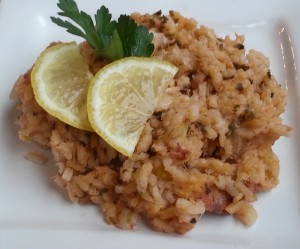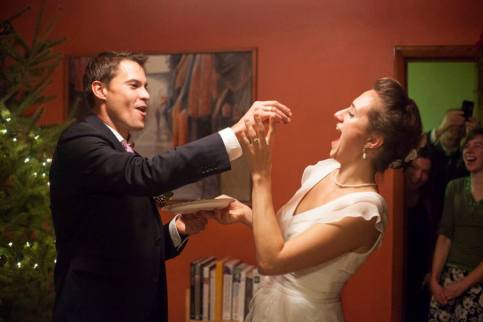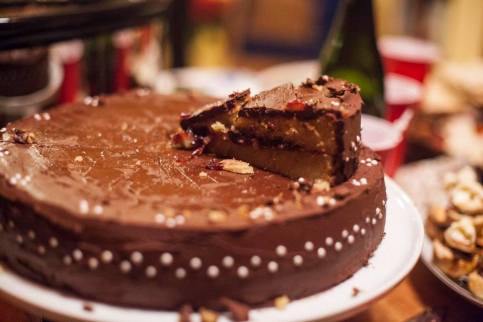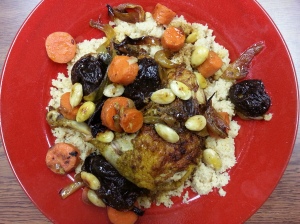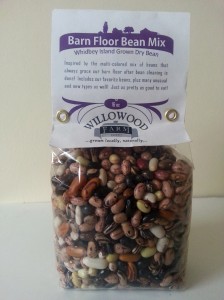Wine gives man nothing…
it only puts into motion what has been locked up in frost.
~ Samuel Johnson
I was disillusioned. It does not matter why; that blackened void is familiar to anyone who has ever sweated and hoped and desired, and then spat out the fouled fruit of disappointment.
Etymologically, the verb ‘to disappoint’ comes from the 14th century French word disappointer meaning ‘to undo the appointment’ or ‘remove from office.’ And it was in such a state of frustrated expectation that I found myself the other day. I had made a appointment with Victory and she had stood me up. At the eleventh hour she had blithely skipped from the office, leaving me hopeless and bereft.
The Texan came home and found me curled up, nursing my wounds on the bright blue upholstery of our new sofa. He took my hand and pulled me up. ‘No no no,” he shook his head. He led me determinedly out the door and through the neighborhood. ‘We’re going out,’ he said.
Weary and numb, I walked with him through streets lined with bright houses and apple blossoms and arrived in the heart of downtown Ballard. It was Friday and the evening streets bustled with bodies released from offices, the air suffused with that unmistakable ebullience that marks the end of every working week. The rhythm of walking was soothing and the sense of bonhomie contagious, so that by the time we turned down Ballard Avenue, the earthbound pull on my heart had slackened ever so slightly.
We turned right and ducked into The Sexton. With an abundance of bare wood, faded photos, and jars of house-made bitters displayed above the bar, this place exuded a trendy aesthetic, a carefully constructed evocation of an early 20th century watering hole. Wondering get again why our generation is so enamored of this era, the Texan and I perched at the bar and settled into a couple of Maritime IPAs. I sipped the hefty beer, served in the requisite mason jars, and felt another increment of weight drop from my heart. Life was not so bad; not when your fingers were slipped around a honey-colored brew and your bar stool snuggled up next to the Texan.
Our first drinks drained, we perused the menu again. “Look at this,” the Texan pointed to an item below the list of cocktails. “Bet on Your Bartender,” the text read, and invited guests to state there preferences and let the professionals take control. We were sold.
Our bartender was a diminutive woman who looked as though she might be toppled by a single drink—more familiar with tofu than tequila. I was skeptical. Too bad we didn’t get the bartender with tattoos and sinuous arms, the one who was tossing bottles and shakers about with a breezy panache suggestive of a true master. Stifling this uncharitable thought towards one of my own sex, I told her what I wanted: “tequila, spice, not much sweetness.”
The spinner of our fate nodded and without pause dove into the spirits, pouring measures so fast I couldn’t keep track. She slid the drinks over to us, smiled, and flickered away to attend to the crowd.
I felt rather than tasted the tequila reposado—the sweet air and baked clay of old dry land. But it was swathed in a tapestry of spice, faint oranges, and bitter herbs. I took another sip. The lead in my heart all but disintegrated under its potency leaving me giddy and fragile, as if recovering from a vicious flu. This was not a cocktail; it was a tonic.
Questioning the man with the sinuous arms, we discovered that our bartender, Marley, is an esteemed maven of cocktails and walking encyclopedia on the history of any distillery you care to mention. “She’s insane, knows it all.” He spoke reverently.
When Marley returned I asked her about my drink. What did this healing balm, this soothing elixir, contain? She reeled off a few names but I stopped her at Benedictine. Really? Who would have thought to put that with tequila.
“Benedictine is one of the oldest liqueurs” Marley began, getting into professorial mode. “It was created by the order of Benedictine monks at the Abby of Fécamp in Normandy, using 27 different herbs and spices. Even today, only a few people have the recipe. It’s a very closely guarded secret.”
Holding the bottle, Marley pointed to three large letters, D.O.M., on the label and told us that they stand for deo optimo maximo, the motto of the Benedictine monks. “For our best, greatest God.” Sitting in The Sexton, watching the crowd grow warm and vociferous as the evening deepened, I thought about these monks and their liqueur. In my state of mind, it was comforting to think of these men; to know that one day long ago there were a bunch of serious, scientifically inclined monks, who, in the course of their experimentations, stumbled upon something so enduring and lovely. I sat back, contemplating my drink. Perhaps the alcohol was going to my head, but in that moment I felt sure it was a divine restorative. I looked around. At the other side of the room Dionysus stood; he grinned back at me and raised his glass. Be happy, he said, deo optimo maximo. Then he inclined his head and was gone.
